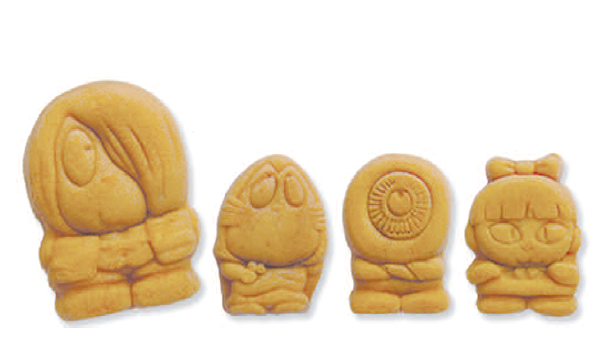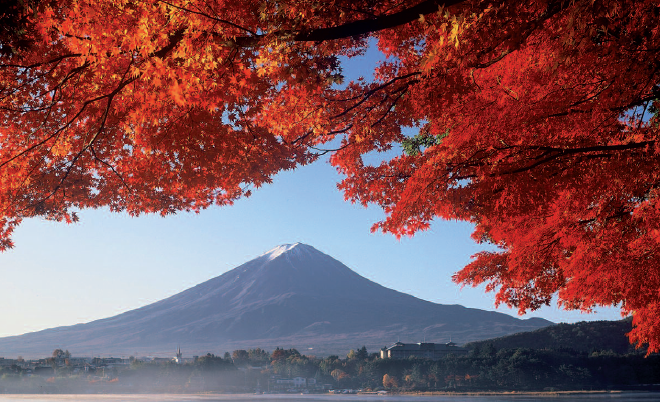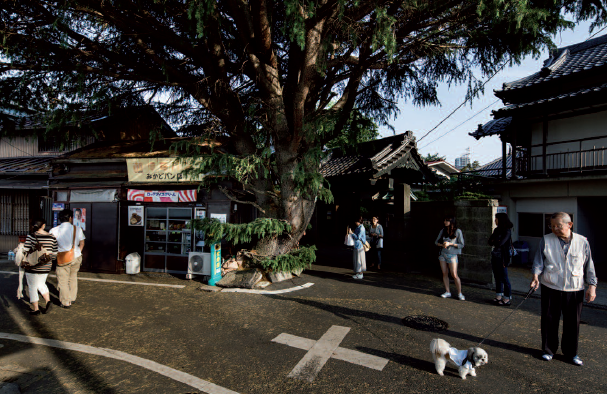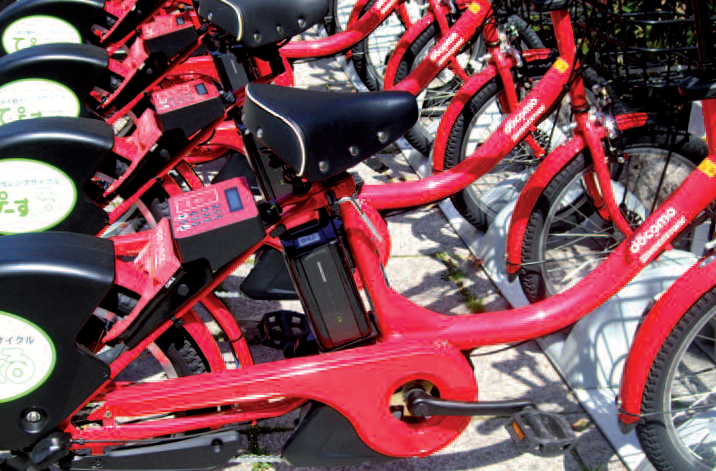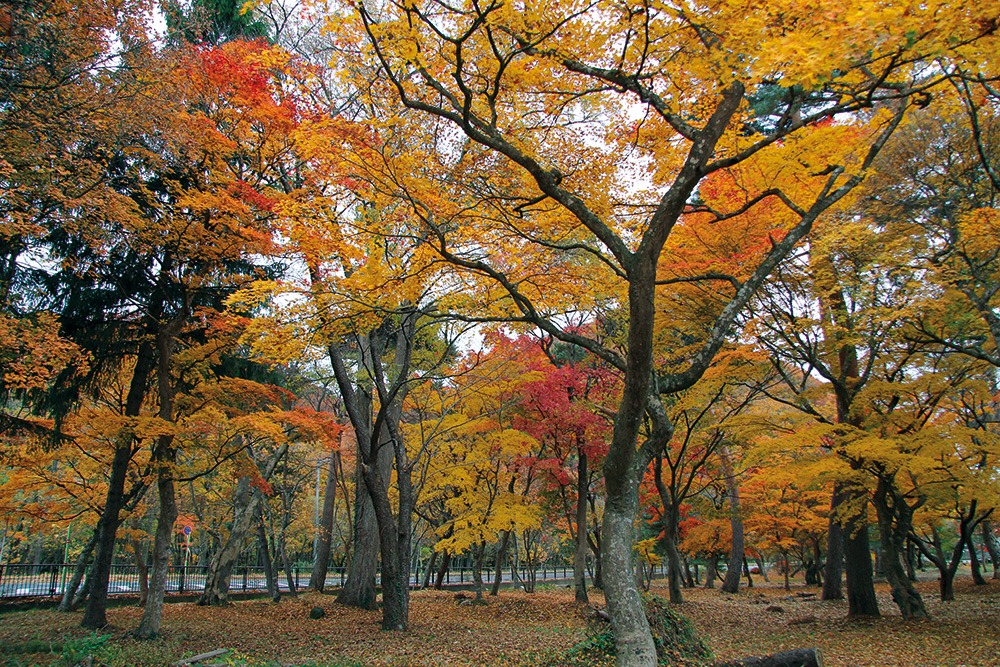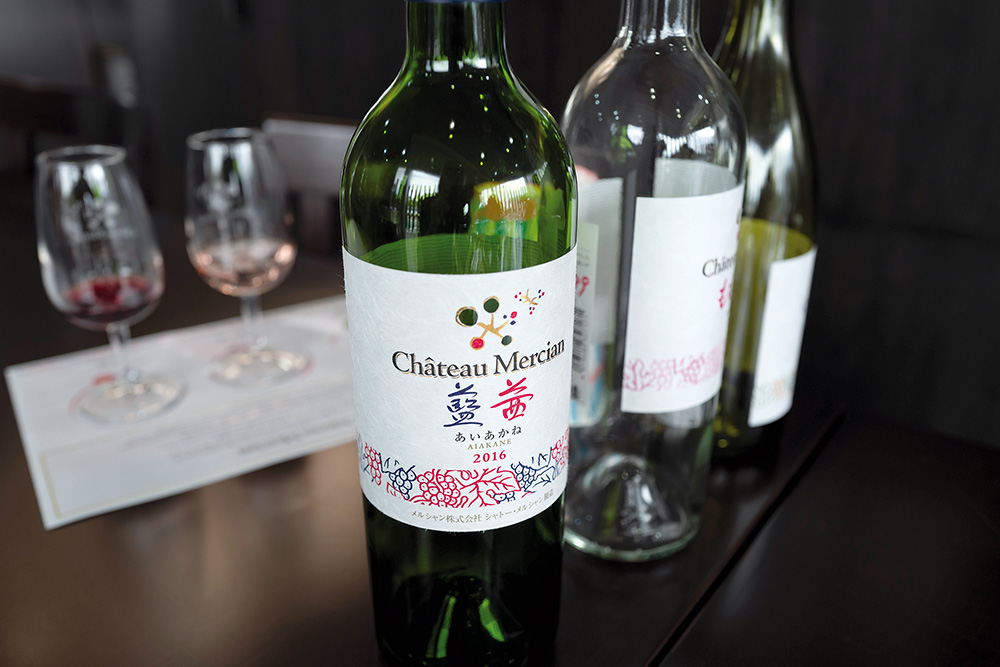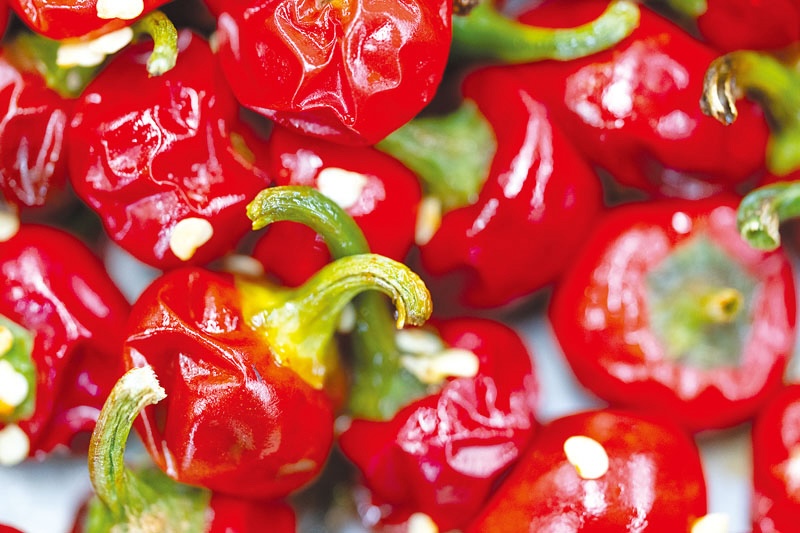
Despite Japan’s long tradition of Buddhist vegan cuisine and macrobiotic diet, postwar Japan has been largely impervious to the penetration of ideas related to vegetarianism and veganism. The Japanese absolutely love food, and a quick check of the four major commercial TV channels will reveal countless cooking lessons, cook-offs (e.g. the famous Iron Chef series, which proved so popular that it inspired the creation of several international versions) and shows introducing new restaurants and food trends. However, amid this seemingly endless orgy of meat, fish, noodles and deserts, vegetable-based cuisine is conspicuous for its absence.
No, let me rephrase that sentence. The Japanese love vegetables and eat lots of them. It’s just that a meatless diet makes them uncomfortable. Restaurants are infamous (at least from a vegetarian point of view) for adding bacon to perfectly good salads and cooked vegetable dishes. The same goes for schools. An American friend of mine and his Japanese wife painstakingly explained to their son’s elementary school that their child was a vegetarian – only to discover that the school dietician had instructed the cooks to surreptitiously add little piece of meat to add all-important protein.
So what should vegetarian and vegan travellers do when visiting Japan? Are they bound to suffer and slowly starve to death? Well, no, the situation is not so hopeless, but it’s important to do a little homework before visiting Japan. Here is some advice.
(The information gathered for this article was sourced from such websites as The Nomadic Vegan, Is It Vegan? and Surviving in Japan)
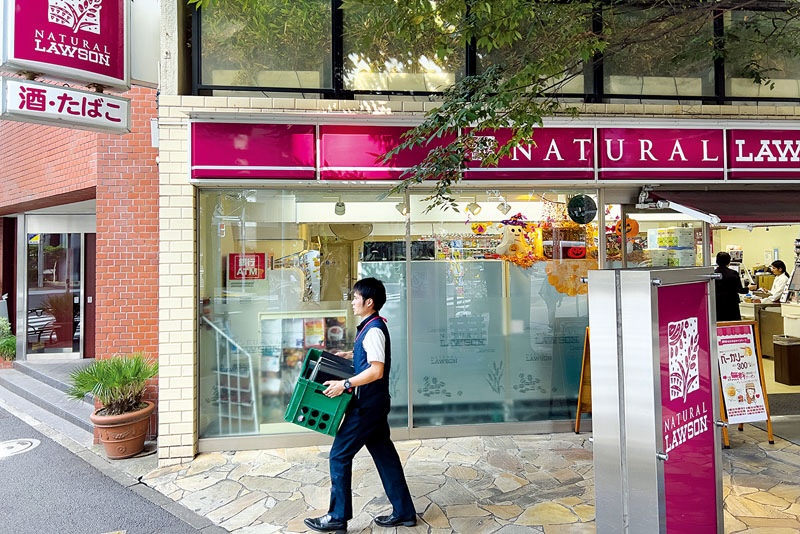
- Everybody agrees that it’s important to learn some basic Japanese food terminology and common names of dishes before you come to Japan. Many people in Japan still don’t understand what vegetarian and especially vegan really mean. Also, Japanese ingredients are not always translated on English menus.
- Make use of the convenience stores found all over Japan. Ideally, you want to visit Natural Lawson because it sells a vast lineup of products from vegan protein bars and shakes to gluten-free chickpea chips in flavours like smoky BBQ and cheese-and-onion as well as veggie-packed curries, several soups and stews, dishes incorporating soya meat and tofu, and tortilla wraps. Not every single item in the store is vegan or vegetarian, but in comparison to most conbini there are substantially more options to choose from.
The problem is that Natural Lawson stores are centred around metropolitan areas and can’t be found everywhere. However, you can find lots of vegan snacks in every convenience store including ume onigiri (rice with plums wrapped in seaweed), dried fruits and nuts. These can save you when you have to grab something quick or when you’re running out of eating options.
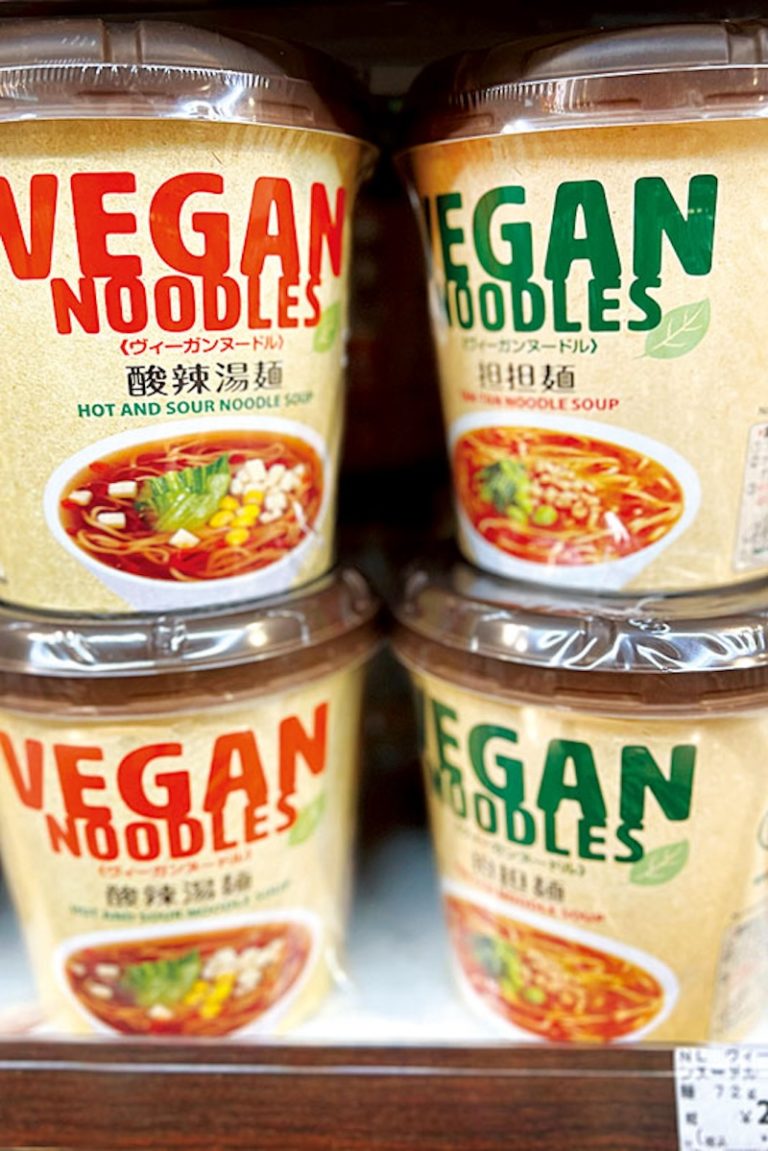
- If you end up at the famous Toyosu Fish Market or in any sushi restaurant, don’t be discouraged. You can get sushi that is made with just pickled vegetables and plums, though be warned that the delicious miso soup they serve with your sushi is generally made with fish stock (it contains bonito flakes). Dashi is a type of broth commonly made with fish (but not always) and is used to make noodles or rice dishes. Bonito flakes are a garnish of dried fish that is used to top off a lot of noodle and rice dishes.
- While ordering vegan food can be a little challenging in Japan, many people who have visited this country say that it’s often easier to find vegan food in a restaurant in Japan than in many Western countries. For example, most restaurants specializing in Japanese cuisine serve vegan-friendly food like rice, tofu, edamame and salad. It’s easy to have a meal like this almost anywhere.
- Because many people – including those working in restaurants – still don’t understand what veganism and vegetarianism really are, you can’t simply say that you are vegan and ask which items on the menu you can eat, or even rely on the restaurant to make a vegan dish for you. You need to do a lot of work yourself and be vigilant about the ingredients to be used. A good option, besides the above-mentioned vegan-friendly food, is to find a dish that is almost vegan and ask for some small changes to be made. For example, you might be able to order a vegetable pizza without cheese.
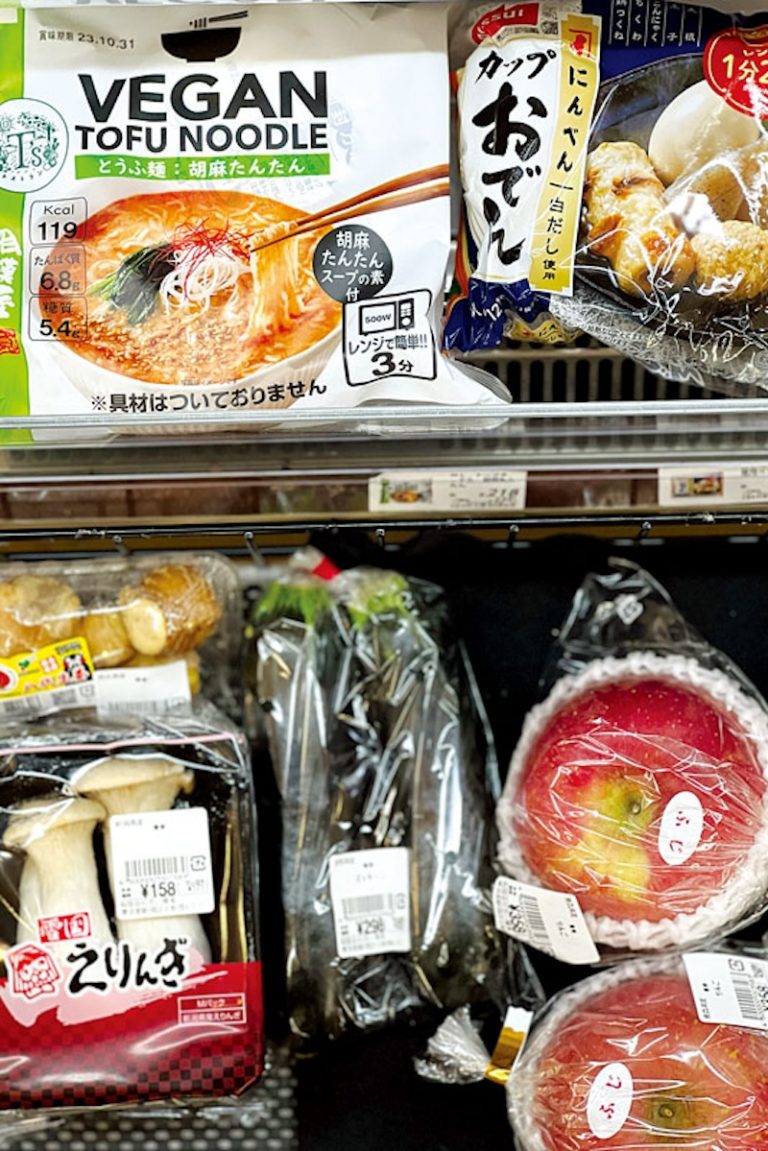
- Obviously, when you buy food or drinks, you want to make sure that they don’t contain anything you’d rather not put into your mouth. In your own country, you only have to check the labels. Unfortunately, this being Japan, the language barrier presents an impossible obstacle unless you can read those devilish Chinese characters. Not only that, food labelling in Japan has not been fully standardized yet, and different companies follow different policies in this regard, often omitting some items. Even asking for help may not be enough since what is written on the label must be interpreted, and to know whether something is or is not vegan often requires not only language skills but also knowledge about the source and composition of food ingredients. For example, you don’t have to be a Kanji Grand Master to know that 乳 means “milk”. So, when someone sees the word “emulsifier” (乳化剤), which includes the character for milk, their natural reaction is to say that that product is not vegan. However, while emulsifier can be plant or animal derived, in Japan it mostly comes from soya and other plant sources.
- At the other end of the spectrum, bone char processed sugar is very common in Japan and chances are it is even used in items that in all other respects are considered okay for vegans. Also, there may be other animal-processing methods used in manufactured food. So, you should use your own discretion when deciding what to purchase and consume.
The bone char can be used as a filter to whiten the sugar. The animal bone char does not remain as an ingredient in the final product, so it’s not possible to tell if bone char was used by reading the label on the product. There’s no current consensus in vegan groups in Japan on whether sugar made with bone char is vegan or not.
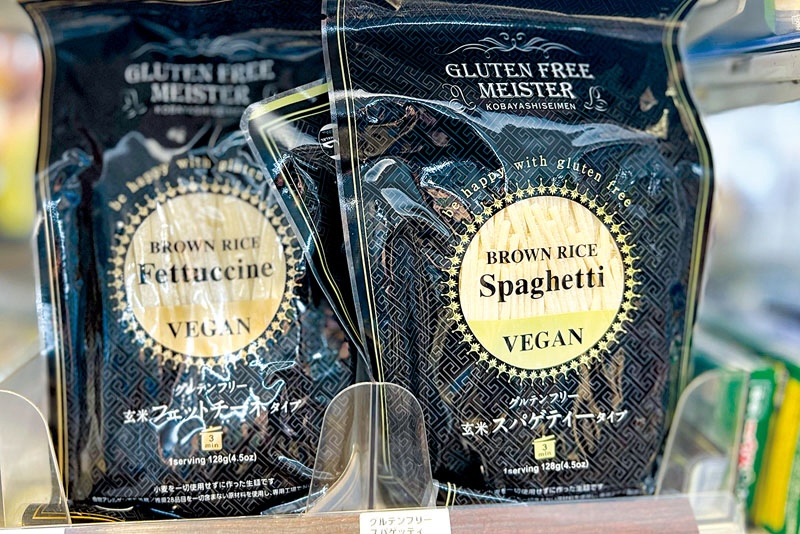
- If you want to know the content of the food you buy but you can’t read Kanji and nobody can help you, probably the best thing you can do is to use a smartphone app like Worldictionary that uses the smartphone camera to read the labels and then provides a translation using Google Translate. If you’re still having trouble, one way to avoid long lists of ingredients is to eat mostly whole foods while you’re in Japan. Otherwise, if you’re not afraid to dive into the Kanji rabbit hole, the Surviving in Japan blog has a very detailed guide to how to read food labels in Japan.
http://www.survivingnjapan.com/2012/04/ultimate-guide-to-reading-food-labels.html
This is the French edition of Is It Vegan?’s vegan dictionary.
There are a few good online vegan restaurant guides that you should check out: HappyCow (English) https://www.happycow.net/asia/japan/
Vegewel (bilingual), https://vegewel.com/ (also has both an English and a Japanese Facebook page)
Hachidory (for those who read Japanese) https://hachidory.com/
By Jean Derome
To learn more on the subject, check out our other articles :
N°135 [ENCOUNTER] Vegan writer Kato Hiroko
N°135 [CULTURE] Chef Noda Kotaro
Follow us !

